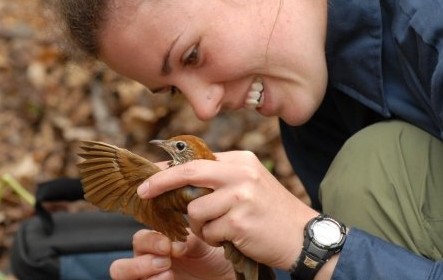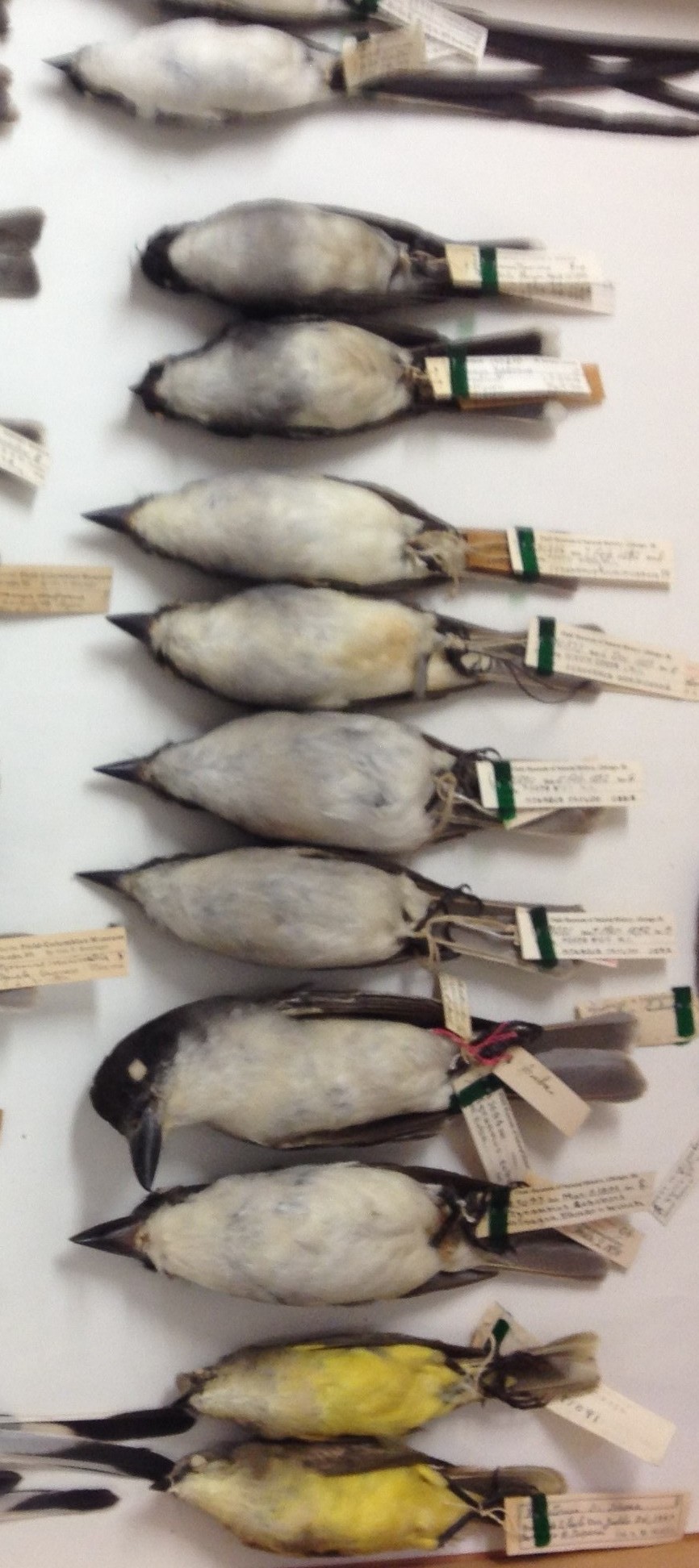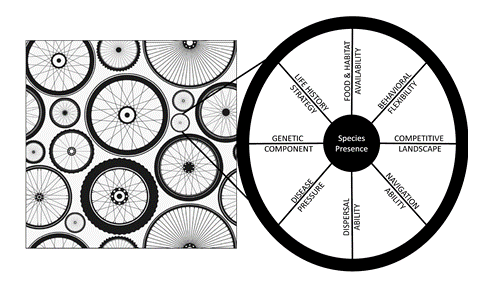Predicting Species Ranges

I use a variety of approaches to improve our understanding of how ecological processes interact to define current species ranges.
I do this using historical point data from museum collections, citizen science data from online sources (such as eBird), biologger data from live animals, and targeted field research (e.g., MacPherson et al. 2018 - The Auk). I recently lead a large collaboration (n=11 co-authors) to produce a student's guide to predictive distribution modelling (MacPherson et al. 2021 - bioRxiv).
I am also interested in testing hypotheses that improve our understanding of how food availability and dietary resource requirements of animals influence range dynamics. This research reduces the uncertainty of one aspect of what drives seasonal range limits in animals - food resources. I am specifically interested in (1) understanding the ways in which the diet of migratory species may differ from sedentary species, (2) understanding trade-offs affected by diet between migratory versus sedentary life history strategies, and (3) understanding the consequences of dietary fat selection on life histories of migratory versus sedentary taxa. I do this by measuring fatty acids, hormones, and stable isotope signatures across the annual cycle. I recently published a paper that used stable hydrogen isotope data collected from bird feathers to argue that a trophic niche shift in migratory (but not sedentary) subspecies of Fork-tailed Flycatchers is likely related to ecological changes in food availability during moult (MacPherson et al. 2021 - The Wilson Journal of Ornithology).
Evolution in Migratory Bird Lineages

I was recently a Postdoctoral Scholar at the Louisiana State University Museum of Natural Science studying how seasonality has influenced the interplay between migratory and sedentary life history strategies and speciation in Neotropical suboscine birds.
I discovered that bill shape (a proxy for generalist versus specialist foraging strategies) was associated with migratory strategy between migratory, partially migratory and sedentary categories across the Tyrannus genus of birds (MacPherson et al. 2021, Biological Journal of the Linnean Society). This and other ecomorphological associations discovered in this research strengthen our understanding of evolutionary links between migration, diet and morphology.
Understanding Range Limits

I am interested in studying each of the 'spokes of the wheel' (pictured above). These are ecological factors that interact to determine the probability of species presence and integrate multiple facets of ecology (i.e., population, community and evolutionary ecology) as well as evolutionary biology. I have worked collaboratively to test how behavioral flexibility (Logan, McCune, MacPherson et al. 2022 - Animal Behavior and Cognition, ), susceptibility to avian malaria (Pacheco, Ferreira, Logan, McCune, MacPherson et al. 2022 - PLoS ONE ), and social communication (Bowser and MacPherson 2021 - Peer Community in Ecology) may contribute to range expansion in the Great-tailed Grackle (Quiscalus mexicanus).